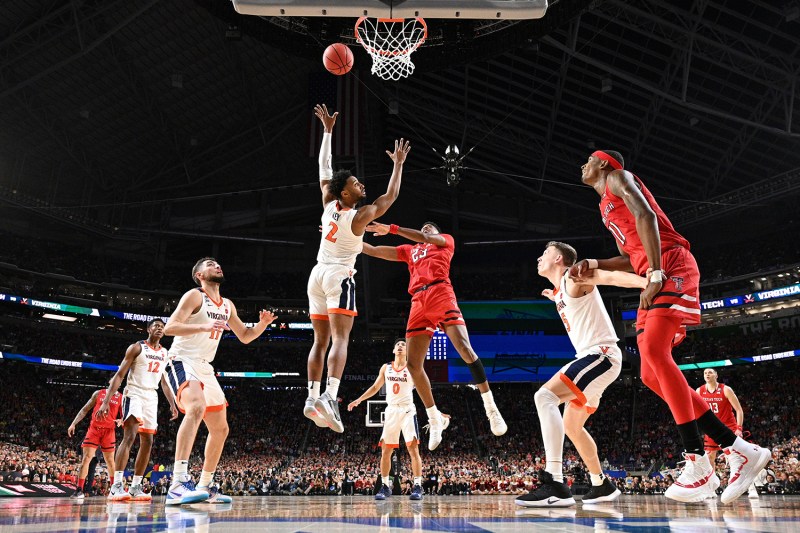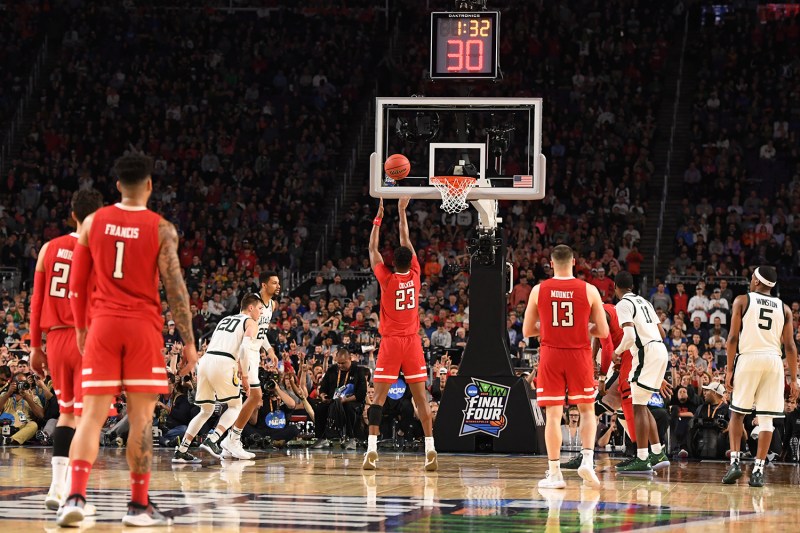So how’s your 2021 March Madness bracket coming along? Pretty good, huh? Yeah, no one’s buying that anymore, even if you’ve been ducking the heat by working from home for two consecutive seasons. Well, enough faking; 2021 is your year to figure this whole annual phenomenon out, and while you may not become the biggest NCAA basketball fan, you’ll at least know what you’re talking about. So let’s dive in.
Related Guides
History of March Madness
First, what is March Madness? In short, it’s an end-of-season tournament the NCAA hosts for a select number of Division I basketball teams. The first was held in 1939, and the Oregon Ducks whipped Ohio State The Ohio State University 46-33. The NCAA has actually assembled a through-the-years look at the past champions, which is pretty revealing (i.e. the shorts are very, very small).
(An aside, but it wasn’t until 1982 that March Madness got its moniker. Sportscaster Brent Musburger coined the phrase while working as a writer for a Chicago paper.)
Over the past 82 years, the tournament has swelled, and now it includes 64 teams, with a bonus four teams called, creatively, The First Four, which (you guessed it) are the first four to play. So, 68 total. Teams are selected via an NCAA committee that has an eye-blurring amount of rules, but in short there are 37 top teams that receive an automatic berth and then the remainder of slots are filled based loosely on their record within and without their conference. They’re seeded into a family-tree-like bracket where the best teams meet the worst teams (relatively speaking) first, advancing round by round and weekend by weekend in sudden-death matchups until the championship game.
Why Do People Love March Madness?
So why do so many people get so excited about an end-of-season tourney? In short, gambling (although it’s generally good-natured). Filling out the bracket, in which you predict round by round winners and losers through the final, is a tradition for both the common man and U.S. president alike, and often friends and colleagues will compete for cash, vacation days, or other sundry prizes. Plenty of online sportsbooks also have ways to wager your monthly rent. Here is the official 2021 bracket, but the exact teams, as well as their first-round matchups, are released in one mass dump, known colloquially as “Selection Sunday.” This year’s big reveal is on March 14 at 6 p.m.
But before you begin counting your earnings, just know that the odds of hitting a perfect bracket round for round are a long, long, long shot: 1 in 9,223,372,036,854,775,808 if you were to flip a coin for picks, and while it’s better if you’re actually selecting based on knowledge, the NCAA claims the odds are still about one in 120 billion. The longest verifiable streak recorded was 49 games (of 67) in 2019.

How March Madness Betting Works
Traditionally (read: non-COVID-19 times), the tournament would rotate from publicly funded boondoggle stadium to publicly funded boondoggle stadium across the country from week to week and round to round. But due to the fact that there is a raging pandemic, this year’s tournament will be contested via Xbox Series X. Just kidding! This year the entire tournament will be run entirely in Indiana, with most games in Indianapolis, over the course of about a month, as you cannot have athletes flying all over the U.S. like planes full of Outbreak monkeys or we will not be allowed to leave our homes before 2023.
As previously mentioned, the First Four starts the tournament with a mini-bracket, which is contested on March 18. The first round occurs on March 19 and 20, the second round from March 21 to 22, Sweet 16 the following week between March 27 and 28, the Elite Eight between March 29 and 30, the Final Four on April 3, and the National Championship on April 5.
So is a benign form of gambling the only interesting part of March Madness? Hardly. The best part, besides a jingoistic loyalty to the only school in your state that made it into the tournament, is the long shots. Many teams are essentially cannon fodder for the top seeds — until they’re not. Every year, unheralded colleges become giant-killers, leaving a trail of stunned Duke fans in their wake. These are generally called the Cinderella stories of the tournament, a rags-to-riches allusion that most people get. Cheering for these tiny schools against bigger, better-funded programs epitomize the tournament’s excitement, and if you don’t have a dog in the hunt, pick a small team to passionately root for after the smoke from the carnage of the first and second rounds clears.
The number-one upset of all time? A scrappy last-place 16-seed University of Maryland, Baltimore County struck down one-seed Virginia in 2018. Even rewatching the game is epic.
There is also a women’s March Madness that takes place around the same time of the year, although in 2021 its location is in San Antonio, Tex. There’s another NCAA men’s tournament that runs concurrently and features teams that just missed the cut for March Madness. It’s called the National Invitation Tournament, and unless you went to one of the 16 schools that are competing, that’s literally all you need to know.
Where to Watch March Madness
Where to watch? All 67 games will be shown across a number of CBS and Turner Sports entities, including TBS, CBS, TNT, and truTV, along with their respective digital platforms, as well as March Madness Live.
So here’s your checklist: Wait for the teams to be announced on March 14, fill out your bracket, and prepare to hate-watch schools you applied for but never got in. NCAA March Madness only happens once a year, and the witching hour is nearly upon us.




